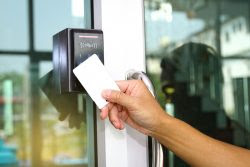Tips for Selecting a Video Security System That Meets Your Needs
A good video surveillance system should deter criminals, protect you when you're home, alert you to events, and provide rock-solid evidence should something happen. All the while, your security camera system should be easy to install, easy to use, and earn you some bragging rights of being able to say, "They picked the wrong place to mess with."
Unfortunately, many people purchase a video surveillance
camera system blindly from a consultant, dealer, or website and often have
regrets.
To make sure that doesn't happen to you, this guide shows
how to select the right video surveillance system for your application. It will
provide you with key points to consider that will uncover your true needs, and
help you select the right gear to match your needs and your lifestyle.
Security Camera Locations
The number one question people ask when buying a video
security camera system is "How many surveillance cameras do I need?"
That's a great question, but I've got to tell you from personal experience - it
doesn't matter how many or few security cameras you have. It only matters that
you identify who is coming and going and that you document their activities
while visiting your facility.
1. Identify the suspect
If you have limited funds, then I highly recommend that
your surveillance system can identify people as they come and go. Odds are that
if something happens at your home or business that is noteworthy, you'll know
about it. And the only question you need to answers is: "Who did it?"
If you know who is coming and going, figuring out "who" is in most
cases very simple.
To achieve good identification of people or vehicles, you
must identify the choke points in your business and the likely avenues of
approach. By choke points, I mean areas of your home, business, or property
that anyone or thing wishing to gain entrance must pass through.
Good examples are doors, windows, gates, parking lot
entrances, etc... Video security cameras dedicated to watching these choke
points will put the bad guy's mug shot in your hands before you even have to
involve the police.
I would also recommend that you think like a criminal for
just a minute. If you were a burglar, how would you enter your home or
property? Would your approach be different during the day than at night? What
areas on the property are least visible to your neighbors? The results of this
exercise will confirm the number of security cameras you need to rest easy and
will likely surprise you.
2. Document activity
For a business, having sufficient video security cameras
in place to provide an overview of activity is usually not an option. There are
simply too many instances that call for documentation of what happened. An easy
case in point is shoplifting. By law in most states, a suspect must be observed
concealing an item and leaving the threshold of the building before the
activity is considered a crime.
Additionally, and many times, more importantly,
documentation of activity in your home or place of business will help to
protect you from prosecution for "Slip and Fall", and other litigious
activities that may occur on your property.
At a residence, using surveillance cameras that view a
wide area often provides some very valuable clues beyond identification, such
as the direction of travel, a vehicle description, identifying accomplices and
neighbors that may have witnessed the crime. In many cases, you can gain many
of these important details with as few as four additional cameras located
around your house.
Safety is another popular reason to have security cameras
providing overviews of your property. It's quite a comfort to be able to watch
children at play in the pool, trampoline, or yard knowing they are safe and
having fun at the same time.
3. Create a sketch
When I'm consulting with customers, I prefer to use a
sketch of the property - even if it's a location I'm familiar with. A simple
hand-drawn sketch will work but if possible, one drawn to scale will help even
more. This sketch is useful for determining a field of views for your securitycameras, ensuring an overlap of coverage if desired, or for getting a second opinion
from a consultant.


Comments
Post a Comment